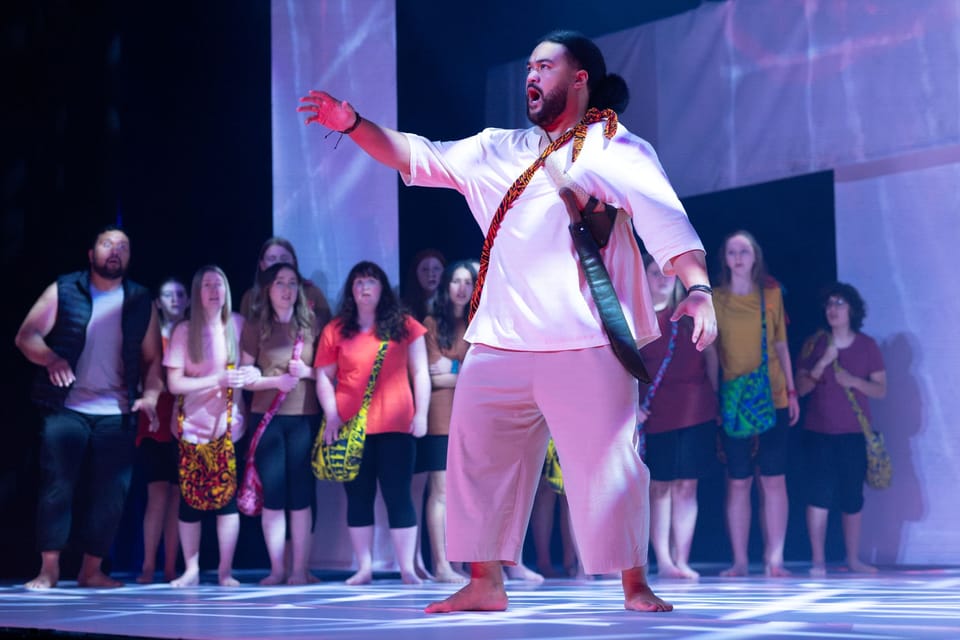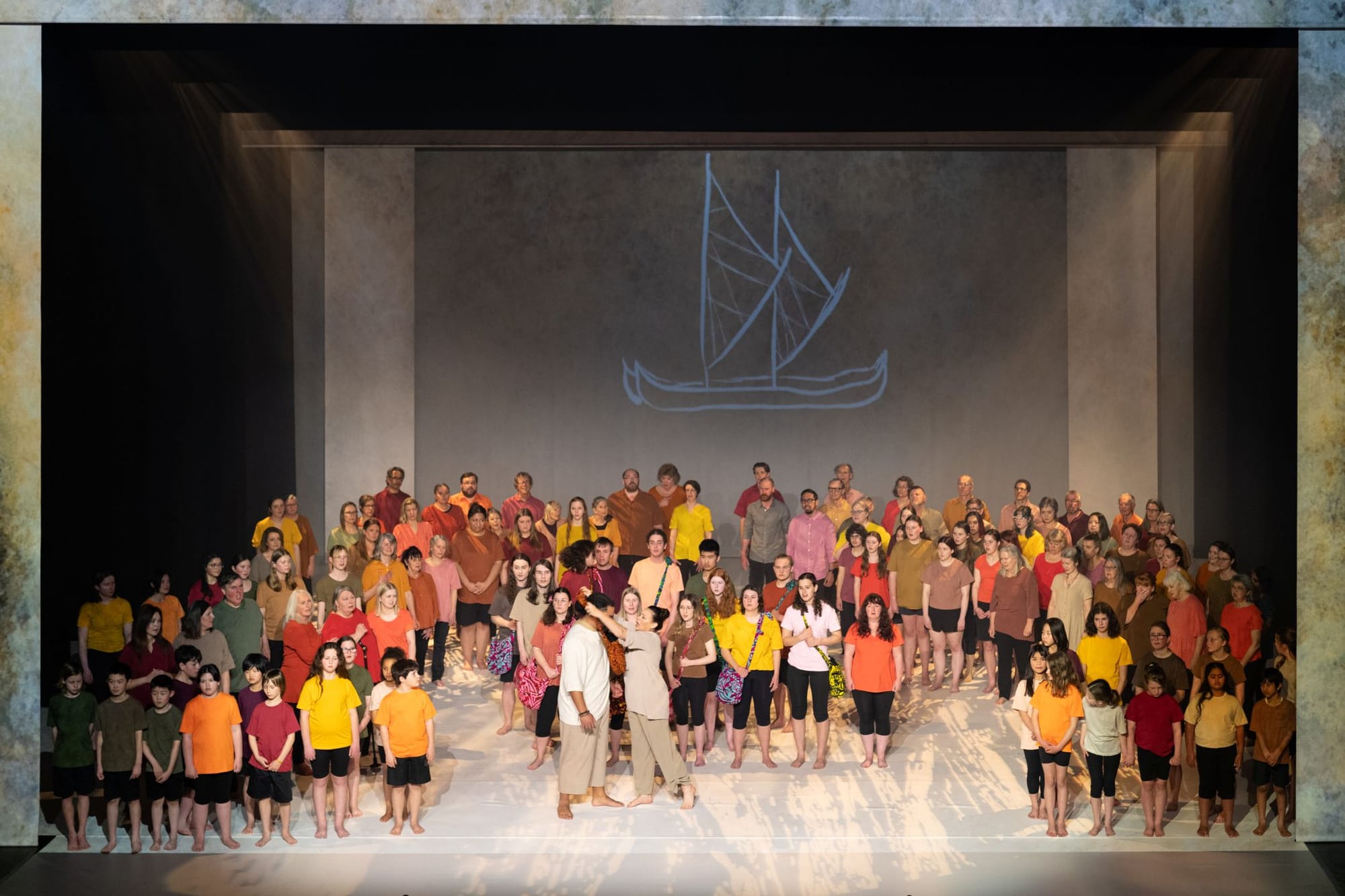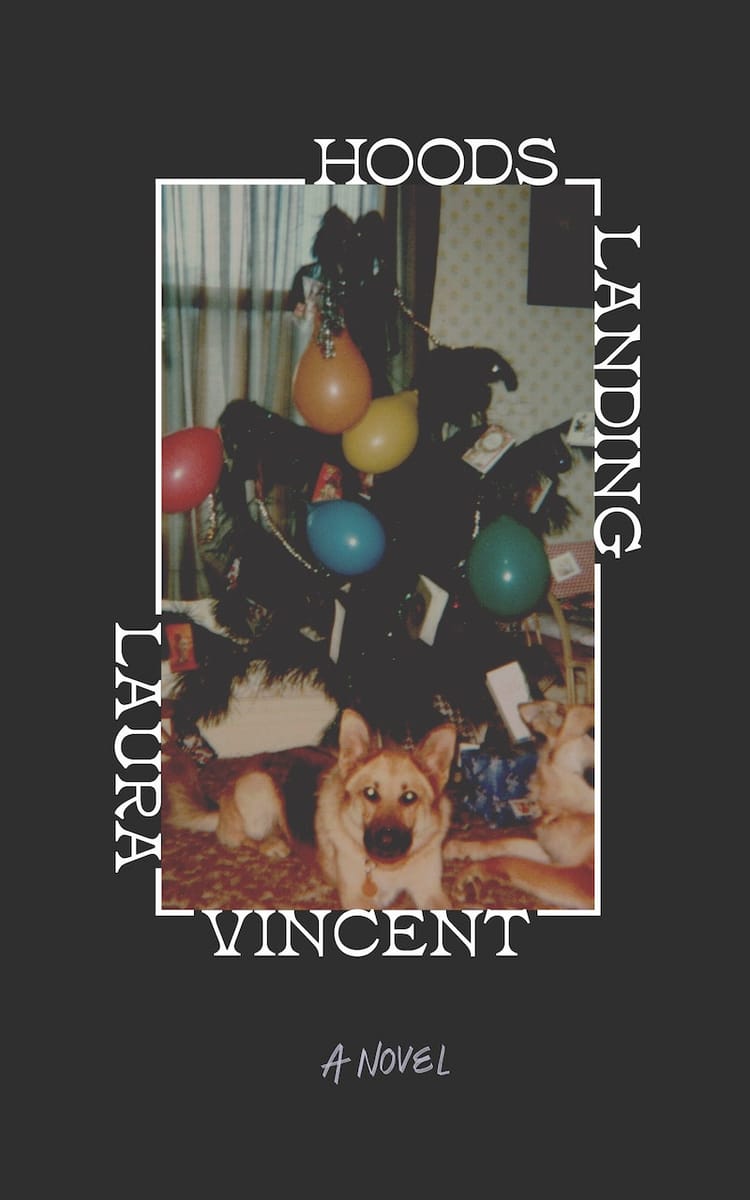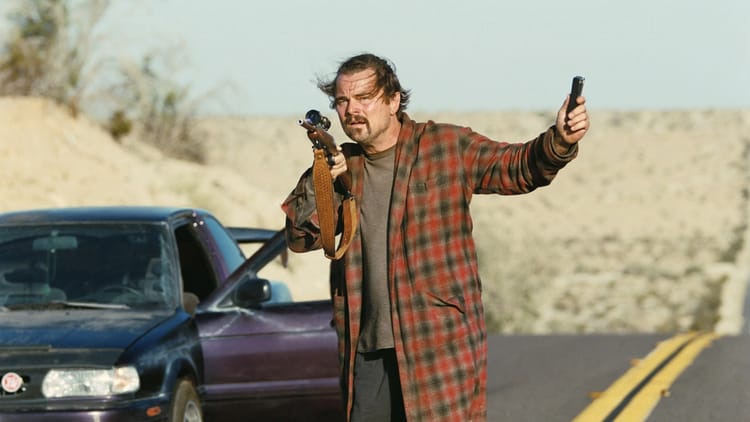Critical Corner: The Monster in the Maze

The beauty of Greek myths is that they still continue to resonate with us, all these years later. Society changes, humanity rarely does. Take the myth of the Minotaur, which is the basis for New Zealand Opera’s new work The Monster in the Maze. Minos, King of Crete, keeps a Minotaur in a labyrinth beneath his palace, and declares that the young people of Athens, who he has recently subjugated, must be sacrificed to the monster. The original myth is, as are many myths, a bit more twisted, but you squint to read too deep between the lines or join up too much red conspiracy thread to see a story of exploitation, of power, of the endless greed of the victor.
Community is at the heart of this production, both in concept and execution. For each performance of the opera, NZ Opera has sourced well over a hundred community singers and players to support the professional cast and orchestra. The result is absolutely the most people I’ve ever seen onstage in an NZ Opera, making even the cavernous Kiri Te Kanawa Centre stage look full.
Bodies onstage is what Anapela Polata’ivao does best. To draw on an image more hack than anything in the show, the stage is her canvas, humans her paint, and in The Monster in the Maze’s compact 50 minutes, there’s not a dull image to be found. She is well supported by Filament Eleven 11’s minimal production design – although it’s worth noting that opera’s minimal makes mainstage theatre look like a fringe show. The set is unobtrusive without being bare, Grecian without being full Classics 101, and most appropriately, serves as a platform for the cast to the perform, rather than drawing attention. The Minotaur is represented entirely through AV, and it’s an effective way to distance the monster from the humans; as well as, you know, actually have the Minotaur look much bigger than the rest of the cast.

It’s a show that is impressive to watch while perhaps losing a bit in the moments – I’ll admit to my ear not being especially tuned to listening to English performed classically, which left me relying on surtitles that were slightly difficult to read due to the font and kerning. Thankfully, the story is simple and vivid enough that the audience is never truly lost. Villains are villains, heroes are heroes, society is broadly fixed at the end in a way that it never is in real life. That’s why we do stories.
It’s a feat to get professionals to move in sync in a way that is both painterly and organic, and a damn near miracle to get non-professionals to do the same. Again, I’ll admit to not having an ear that is especially tuned to classical music, but the vocals seemed strong and well-supported.
I use the word “non-professional” intentionally here, as while there is nothing inherently wrong with the word “amateur”, it can be so often interpreted to mean “not as good”. The division between professional and amateur in a live performance context feels increasingly meaningless – moreso for audiences than artists. Now, it feels less intended to delineate paid professional work from unpaid, or underpaid, amateur work so an audience can set their expectations accordingly, and more to separate two communities of artists. Thousands of words could be spent on why this is the case, for reasons both economic and artistic, but ultimately it serves neither the artists nor the audiences
Work like The Monster in the Maze aims to reverse this. It’s a treat to see this in real time, with professionals like Sarah Castle and Joel Amosa onstage with scores of people who are clearly, visibly, stoked to be there even when they’re playing potential sacrifices. Whenever the narrative lost me, the production never did. It’s subjective as to whether art is “better” whenever everybody is invited to participate (a debate better had elsewhere), but it feels a hell of a lot warmer, and more open. Greek myths resonate with a great many people, not just the ones who are paid to communicate that resonance (and also not just those who can afford to have it communicated to them). Some days, and on this particular night, I’ll take that over the cool, cold, sheen of professionalism.
The Monster in the Maze played as part of New Zealand Opera’s 2025 season.
Other Things I’ve Consumed
- I read Amy Odell’s fantastic biography on Gwyneth Paltrow last week. I’m slightly torn about it, as a longtime Gwyneth enthusiast (I hesitate to say fan). I found the stuff about her as an actor fascinating, as well as her weirdly singular pathway through her career, but the Goop stuff missed me. I have big questions around the amount of criticism she gets compared to her male compatriots. At any rate: A massively entertaining read about a bizarre human.
- On the complete other end of things: The Turner House by Angela Flournoy is one of the best family dramas I’ve ever read. It follows a Black family across the 20th century through vignettes, and it’s everything I want a family drama to be. It’s messy, it’s profound, it’s funny. Even better? It’s absolutely a novel and not a long treatment for a mini-series.
Self-Promo
- I’m teaching writing again across October and November! If you’re based in Tāmaki and want to learn some writing tips – generally for playwriting but I think a lot of the material is helpful across fiction – check out for details here.
Writing and reporting takes time, and if you want to support the amount of time it takes (and ensure that the scant amount of meaningful coverage of local art can continue), please considering supporting Dramatic Pause with a paid subscription ($8 p/m, $60 p/a) and if you can't afford a paid subscription, please share the work with your networks!





Member discussion